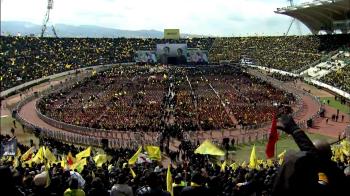Alwaght- Energy crisis is hitting the world as one of the consequences of the Ukraine war, with the consumers across the world struggling to find sustainable ways to fill the void.
Meanwhile, the Western efforts to sanction the Russian gas have pushed them to look mainly at major gas suppliers in the Persian Gulf region. Amid this growing demand, Iran with the world's second-largest gas reserves is seeking to enhance its position in the regional and global energy geopolitics.
Gas pipeline to Oman, Iran's gate to LNG market
An emerging supply line aimed at meeting the future gas demands is the under-construction Iranian gas pipeline to Oman. Reports from Iran suggest that one of the agendas of the upcoming visit to Oman of the Iranian President Sayed Ibrahim Raisi is the talks on completion of the pipeline.
In 2016, senior officials from the National Iranian Gas Export Company met with the Omani oil ministry officials and representatives of three international oil companies of Shell, Total, and Korea Gas Corporation to explore the potential for gas transfer from Iran to Oman. The talks followed a 2013 agreement between the two countries to develop a 15-year gas exports plan to export via an offshore gas pipeline worth $25 billion. The proposed pipeline runs from the giant South Pars gas field in Iran to coastal city of Sohar in northern Oman, where an existing pipeline runs to Salalah near the Yemeni border. The project was planned at the time for exports with a capacity of 1 billion cubic meters of natural gas.
Although Iran is one of the largest gas producers in the world, it has not yet entered the LNG export market seriously, and due to increasing international demand for LNG, Tehran plans to expand its presence in the market. Actually, LNG is one of Iran's main energy export items planned for Europe.
Oman, meanwhile, has recently been able to accelerate its LNG exports through the development of the Khazzan gas field, showcasing successful use of new drilling techniques in the Persian Gulf. Therefore, according to Mohammed al-Rumhi, it is predicted that part of the gas transferred via this new pipeline be transformed to LNG and sent to Asian and European markets.
Since 2014, Oman has imported about 73 billion cubic feet of natural gas from Qatar through the Dolphin Pipeline, which reaches Oman via the UAE. Muscat, however, wanted to completely stop these imports by operating the phase 1 of the Khazzan tight gas field.
Oman consumed 775 billion cubic meters of natural gas in 2017, according to the US Energy Information Administration, and the country has had gas surplus since September 2017 as Khazzan gas field went operational and immediately produced 1 billion cubic meters daily.
Experiencing production fall and gas shortage and economic challenges in recent years, Oman is trying to diversify its income sources and accepting the Iranian pipeline is part of this strategy.
This is so important to Muscat that its oil minister said his country continues to import gas from Iran despite the American sanctions and will complete the pipeline.
"We can accelerate LNG production. Today, it is possible to produce blue hydrogen using gas. We talked this with the Iranians. This opens new opportunities to the Iranians to produce hydrogen. We can do this together," al-Rumhi said.
Opening markets from India to Yemen
Gas export to neighbors is an Iranian priority for the future. Oil and gas exports of Iran to neighbors helps regional states solve their problems and strengthen peace and stability in the region.
While Oman economic development plan is based on reliance on energy, there are some political and geopolitical considerations in its economic planning. The Iranian gas pipeline can serve to bridge the gaps between Iran and the Persian Gulf Arab monarchies. Also, Tehran and Muscat try to make the pipeline a bridge transferring gas to other countries.
In 2017, several meetings gathering together Indian, Iranian, and Omani officials discussed transfer of Iranian gas to India via the Iran-Oman pipeline.
The pipeline can also be extended to reach Yemen, something pointed to by Omani officials.



























